_________________________________________________________________________________________
For more about me, click on the image
Nero
Very often, asking if Nero was a good or bad emperor, the answer seems obvious: He was one of the worst despots of the history. Of course, we have always to remember that the victor is writing history, and not the looser. Wasn’t he the emperor who fiddled from his balcony over the fire of Rome? ; and didn’t he accuse the Christians of causing the fire, and going in the history as an early persecutor of Christians. But how you can persecute christians if the name “christians” didn’t exists? We have to wait until Tacitus and the historian Josephus Flavius are using the name “christian” for the first time.
I personally wouldn’t call him better or worse than many others. In many aspects, even better. Born the 15 December 37 a.d. as last in the line of the Gens Giulia, the family of Julius Caesar, having as mother the most ambitious lady of her time: Agrippina the Younger , sister of Caligola and had as great uncle Tiberius, the successor of Augustus. He forced Agrippina in a marriage with Gnaeus Domitius Ahenobarbus, “a man who was in every aspect of his life detestable” as Suetonius said. With him she got a son, Lucius Domitius Ahenobarbus the future emperor Nero. Suetonius states that Domitius was congratulated by friends on the birth of his son, whereupon he replied "I don't think anything produced by me and Agrippina could possibly be good for the state or the people."
After a failed plot to murder her brother Caligola -with whom she had an incestuous relationship-, she was send into exile, being separated from her son. After the dead of Caligola, Agrippina’s uncle became the new emperor: Claudius. So, for climbing upon the social ladder, Agrippina poisoned her second husband Passienus Crispus and got rid of the third one, and between many lovers, moved herself into the court of the emperor Claudius. Her son Nero was given the best teacher on the market: the greek (and extremely corrupt) philosopher Seneca. Further manipulations of Agrippa made that her son changed his name in Nero Claudius Caesar Drusus Germanicus, as adopted son of the Emperor Claudius. There was still the problem of the legal son of Claudius, Brittanicus.
Claudius later repented of marrying Agrippina and adopting Nero, began to favor his natural son Britanicus, and started preparing him for the throne. This was the motive that is claimed by many that Agrippina needed to eliminate Claudius. The ancient sources credited her with poisoning Claudius on October 13, 54 with a plate of poisoned mushrooms at a banquet, thus enabling Nero to quickly take the throne as emperor, at the age of seventeen.
An other story tells us that the emperor Claudius suspected the machinations of Agrippina, and would only eat the fruit that he harvested by himself from the threes, overlooking what a very experienced woman could do. Agrippina went by night in the gardens and with a pencil added poison on the skin of the figs. The more he plucked and eat, the faster he was gone.
Britanicus who was away from Rome could not compete against the intrigues of Agrippina and the elder senators, and so avoiding that Nero became emperor. Who was behind the killing of him is still unsure: Was is Agrippina again to ensure her boy on the throne, or was it an act of Nero to secure his throne?
Under his tutor, Seneca, Nero was raised with fiddling, dancing, philosophy, and many other arts. Of course with the underlining idea of his mother that, if the fiddler would become emperor, she would have the control of the empire, and be becoming the real ruler of Rome.
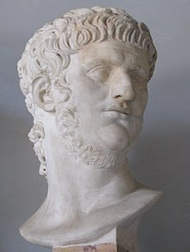
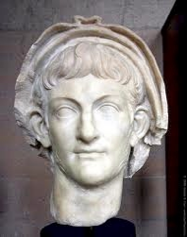
Nero 30 years old
Nero 17 years old

But the day he became emperor at the age of 17, he told his mother that he didn’t need her anymore. From now on he would rule together with his philosopher Seneca. And that was not exactly the plan of mummy. She began to take contact with Britanicus, in the hope through him regaining the power over Rome. And Nero had learnt a lot of techniques of his mother: Britanicus was secretly poisoned during a banquet on Nero’s orders, and mommy got accused of it. This helped Nero to remove her from his palace, accusing her of murder.
The Remorse of Nero After the Murder of His Mother - John William Waterhouse
But Nero had no problem to oppose his mommy the first years of his reign by the immense popularity that he gained by the people. The very good looking young Nero, under the guidance of Seneca, he allowed common people to visit him in his palace for a drink, he visited people in the hospitals, tried to improve their quality of life, made laws against the corrupt and so much more. He was also the only emperor in the history, who left the capital for two years, not for conducting a war or expanding the empire. No !, only to go singing and fiddling in every theatre of the greek islands. And in those days you had to be sure about yourself to leave the capital two years alone, coming back and seeing it is still yours and there. Specially if we know that after Nero’s dead we got four emperors in six months. But Nero was so much beloved by the people.
He even thought about building a new city for the people. And Rome was desperate for it. In only a few years the population almost doubled. There was a house-shortage. And not only that; most of the roman citizens lost their jobs. Who could compete against the low cost countries, the provinces and the slaves. The local carpenter lost his job, couldn’t pay his rent or mortgage anymore and at the end of the year would lose also his house by foreclosure to the banker, who would put it on a higher price on the market, because for every house that came free, there were ten others waiting. And the bankers (senators) were the friends of Mommy. Inflation and deflation went hand in hand.
That only made that the tensions between Nero and his mother got bigger and bigger. So he came to the point of no return: killing mother or being killed by mother. Of course he was much more in favor of the latter. Problem was that killing your mother, matricide, was one of the most horrendous crimes you could do in the roman society. So, if you want to do so, better to disguise it a little bit. It was said that he offered for her birthday a banquet in his palace. And when she came down from the steps for the gala-dinner, for sure he started fiddling: “Happy birthday to you ….” Then he invited her to sit next to him on the table.
And during the meal he went with his hands through her hair, giving her kissing, and showing all his affection for her by even putting little pieces of food into her mouth, and even calling her “Augusta”. Then he stood up, asked for silence, and after praising the qualities of mommy, announced that as special birthday present he organized for her ànd her friends a cruise of the Italian Islands. Together they left the palace and in procession they went to the port of Ostia (antica), where five ships were ready for mommy and her friends, the middle decorated with gold and brocade for mommy. We have three lovely accounts from what happened then (1): Nero, who stood still on the beach , weaving to his mommy in departure, crying and saying that he would miss her, pledging not to stay away for to long because he loved her so much (and later he would say: “that was maybe one of my best performances”)
All agree that Agrippina embarked on this boat and was nearly crushed by a mechanical collapsing lead ceiling that Nero had installed in the roof above her bed. The lead was so heavy that it went through the bed and the bottom of the ship. Nero, seeing that the ship went under, returned to his palace and started celebrating the departure of his so “beloved mommy”. But then the door went open. And who stood in the door? Yes !! Mommy. Was she saved by the side of a sofa breaking the ceiling's fall? Was she sitting on the toilet, had she a life-jacket on? We don’t know, but in any case, she survived it. So he ordered her to be executed and framed it as a suicide. Nonetheless, now the whole city of Rome knew that Nero was behind the killing of his own mother. When the news spread that Agrippina had died, instead of insulting the emperor, the Roman army, senate and various people sent him letters of congratulations that he had murdered his mother. For them, she was nothing more as the head of the Leman-brothers (the bankers that caused the worldwide financial crisis of 2008 with the subprime mortgages), who had reduced the people in poverty, and who was now finally gone.
Agrippina Minor, “Mommy”
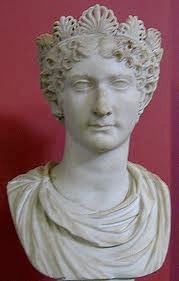
But then, the last eight years of his reign, he became the madman that we know from the movies with a.e. Peter Ustinov and many more. In those we are seeing a madman, obese, schizophrenic, impotent ruler. And that was probably caused by his fantastic team of greek and Egyptian doctors, who gave him daily a mercury pill, also called quicksilver. That you are becoming obese from it, call it collateral damage. Impotency an other collateral damage. But you become also schizofrenic, just like the first emperor of unified China, Qin Shi Huang, (4) as it is reported, who died of ingesting mercury pills that were intended to give him eternal life. Bad collateral damage. And in his schizophrenia, this erratic behavior, withdrawal from reality, and intellectual and emotional deterioration, he started killing people at random: senators, bankers, even friends. Was one of them the father of a Vestal Vergin, one of the ladies who were responsible for the eternal fire? Than it could be that she got angry, and did they caused the fire? Whether was it an accident or arson? Probably we will never know. Tacitus's (5) account, however, has Nero in Antium (today Anzio) at the time of the fire. Tacitus also said, that Nero came back to Rome and was playing his lyre from his terrace, singing while the city burned, was only rumor. That was said by Suetonius (6) and Cassius Dio (7): Nero sang the "Sack of Ilium” in stage costume while the city burned on the longest night of Rome, the 19th July 64.
In five days, ten of the fourteen parts of the city were destroyed or heavily damaged. And probably Suetonius and Cassius Dio were right saying that he came back from Antium and sang over it. There was probably still something left of the good young Nero, who wanted to build a new city for the poor people and always been obstructed by the powerful bankers. The problem was: who will be ”Bob the builder?” for rebuilding the city? Usually, they are the prisoners of war. But there was no time to conduct a new war and to find them for rebuilding the city. So, then you have to find in the system itself. And among the best allies he had were the Jewish people. A hundred years earlier, Octavianus, Augustus had won the sea battle in Actium (-31) against his rival Marc Antony and Cleopatra, thanks to the Jewish community, who made that his fleet was always provided in all its needs. After the victory, the Jewish people got rewarded with special privileges. Such as being ruled by a king (Herod) and not by a governor. Those privileges started already creating tensions at the end of Nero’s life. Nonetheless, they remained amongst the most faithful lobbyists of the Gens Julia, from which Nero was the last member. It was even said that Nero personally contributed at the decoration of the second temple of Jerusalem. Logically, he turned to them for some help for rebuilding the city.
Nero, who had as schoolmate the grandson of Herod the Great under Seneca, asked him for help. The grandson, called Herod Agrippa, after the son in law of Octavianus Augustus, was intriguing already years during his stay at the imperial court in Rome and taking advance of Nero’s madness for creating a pan-Judaic movement with more autonomy from Rome and from which he, Herod Agrippa, would be the new messiah. When Nero asked him where he could find “Bob the Builder”, Herod saw it as his opportunity to get rid of the competition in Judea.
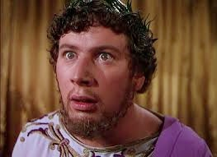

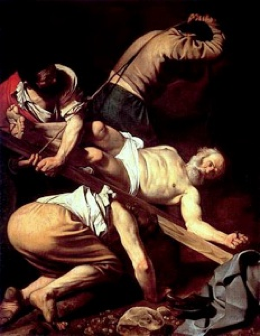
Was it now, that in their Jewish community, they had problems with the followers of a troublemaker, who died a 30 years earlier and claimed to be the Messiah: a certain Jesus of Nazareth. That man started a movement called The Way, and among his followers were st. Peter and st. Paul, who were both in Rome. Of course, Nero had never heard about that man who died on the cross before he was born. And Herod Agrippa, the grandson of Herod the Great, convinced the emperor Nero to persecute them, and to reduce them to slavery, in order to put them to the job of rebuilding the city. He managed to do so by the nickname the early Christians had in Rome: Taumaturgus, θαυματοποιός, the Greek word for a miracle worker, illusionist, magician or conjurer.
Where the followers of Jesus not those who went in the streets and told the blind: “in the name of the Lord, you can see again, you can walk again etc.” They even spoke about resurrection. But that wasn’t the worst!! Those early followers of Jesus had also the reputation of being cannibals !! Didn’t they gathered often together for eating the body of Christ and drinking his bled ?! Now, you can imagine that Nero, schizophrenic, heard that there were magicians in the city who were also cannibals, had no problem to persecute them. And that was the first persecution. Not of Christians, but of magicians and cannibals. The ordinary people were put to rebuild the city and the golden house of Nero, but the heads of that movement were killed. Among them St. Peter and St. Paul. Many more died also on the stake in the circus of Nero, located beneath the Villa of Agrippina, his beloved mother, today the "ager Vaticanus", where was the circus of Nero, after he enlarged the circus of Caligula that was there before. And the obelisque on Saint Peter's Square is the one comissioned in Egytp by Nero for his circus.
Nero never persecuted Christians, but magicians and cannibals. He had no clue who they were. Most of the followers of Jesus died as a consequence of the intriguing of Herod Agrippa, who wanted to get rid of the competition. And we see, that after his dead, the following emperors like Trajan (who was even almost proclamed Saint) and others, were very lenient against the early Christians. It’s only, when the empire started shrinking, and they want to go on with the former lifestyle, that proper persecutions against are starting. This time with the argument that they didn’t adore the emperor as God. Monotheism was not an issue for Nero, how otherwise he could be befriended with Herod, a Jew, who believed in the one God?
Second temple of Jerusalem
Death of Saint Peter, Caravaggio, Santa Maria del Popolo Roma

Bust of Gnaeus Domitius Ahenobarbo
Footnotes
(2)Suetonius, The lives of Caesars, Nero, 34
(3)Cassius Dio, Roman history, LXIII,12
(4)Zhao HL, Zhu X, Sui Y (2006), “The short-lived Chinese Emperors” J.Am Geriatr Soc. 54 (8): 1295-6
(6)Suetonius, The Lives of Twelve Caesars, life of Nero, 38
(7)Cassius Dio, Roman History, LXII, 16


Arch of Titus, Forum, Rome
A year after Nero's death, in 79 AD, a year of four emperors in a row, a new dynasty is emerging -the Flavi-, having no affiliation with the lobbyist of Nero, the Jewish people. Vespasian send immediately his troops to Judea and his son Titus to suppress the revolt leaded by Herodes Agrippa against Rome for more autonomy, by destroying in 70 AD the second temple of Jerusalem. Josephus Flavius, jew, friend and writer was present, and told us that the prisoners of war were brought to Rome. The lake of Nero’s golden house was drained and they had to build the Amphitheater of the Flavi’s, the colosseum. And an arch of victory was erected: the arch of Titus.
In the art of the Pio Christian Museum in the Vatican we can see from where is coming the connotation the the followers of Jesus were seen as magicians, miracle makers. In the wallstones of the early christian buriel places, the catacombs, we see how Moses with a stick is taking water from the rocks in the desert and the faithfull drinking from it. Simular, with a stick we see the multiplication of bread or the resurrection of Lazarus.
That stick is still in use and it is the wand of Merlin or Harry Potter ...



And more, if you ever go to a synagoghe, you will see that the rabbin, the teacher, held in his hands a stick. At the end we have the form of a little hand. It is the Yad : יַד
, a Jewish ritual pointer, popularly known as a Torah pointer, used by the reader to follow the text during the Torah reading from the parchment Torah scrolls. It is of course not the teacher who tells you what to do, it is the finger of God. It is not Moses who takes the water from the rocks, but the hand of God; and it is not the Saint that does the miracle, once again, it is the finger of God. Over the years, it became the magic stick, the wand.



In the abis of the Basilica San Clemente in Rome (and in the Basilique St. John in Lateran too), we have the cross (as the Yad), rooted in accanthus plant (symbol of eternal life, see Deposition of Caravaggio), from which are emerging four little rivers: and in the semi-circle, 12 sheep are drinking from that water. The four rivers is an allegory of the Living Water of the four gospels and the twelve sheeps, the apostles or the twelfe tribes of Israel, the whole world.
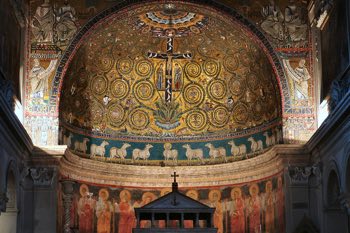
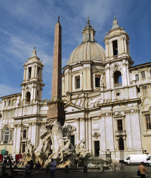
Simular, on the Piazza Navona, we have the obelisque, and underneath the allegory of the four longest rivers: the Nile for Africa, the Rio della Plata for Latin America, the Danube for Europe and the Ganges for Asia.
We are in the time that the Catholic Church regained his spiritual force through missionary after the Council of Trent: De Propaganda fidei !!
Now, from the finger of God (the Yad, the Obelisque), the living water of the four gospels is running to the etch of every continent. the fountain is a water-feature, but has also a very strong theological meaning. We have to spread the Good News !!
Christians
are they ....
magicians ?
Ressurection of Lazarus
Multiplication of bread
Moses takes water from the rocks in the desert
The use of the Yad for reading the Torah
Harry Potter & his wand
The Yad, the finger of God, is further used in art in different ways, often in an allegorical way. Here we have a few examples ....
What happened after the death of Nero ? ......
Hollywood and Merlin
